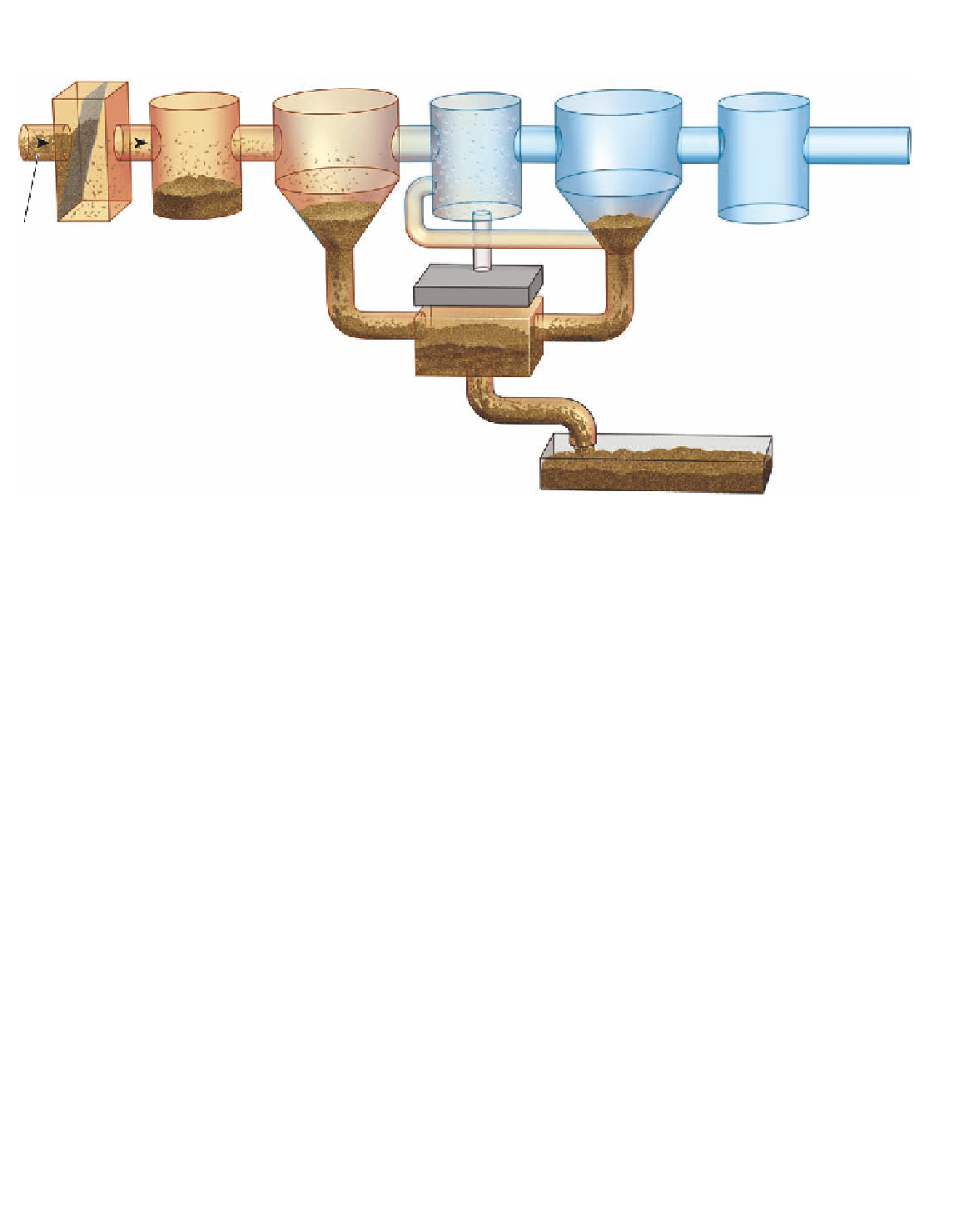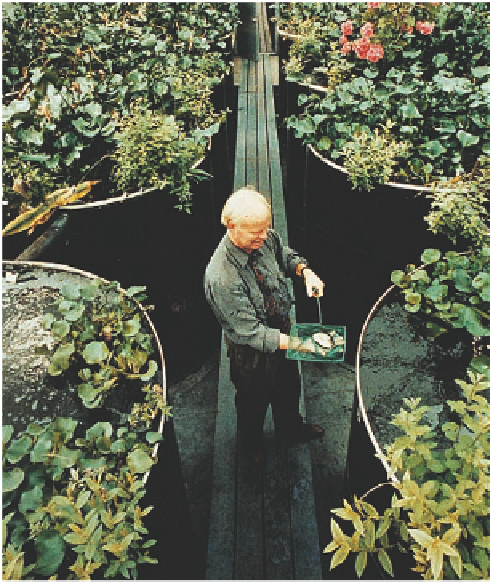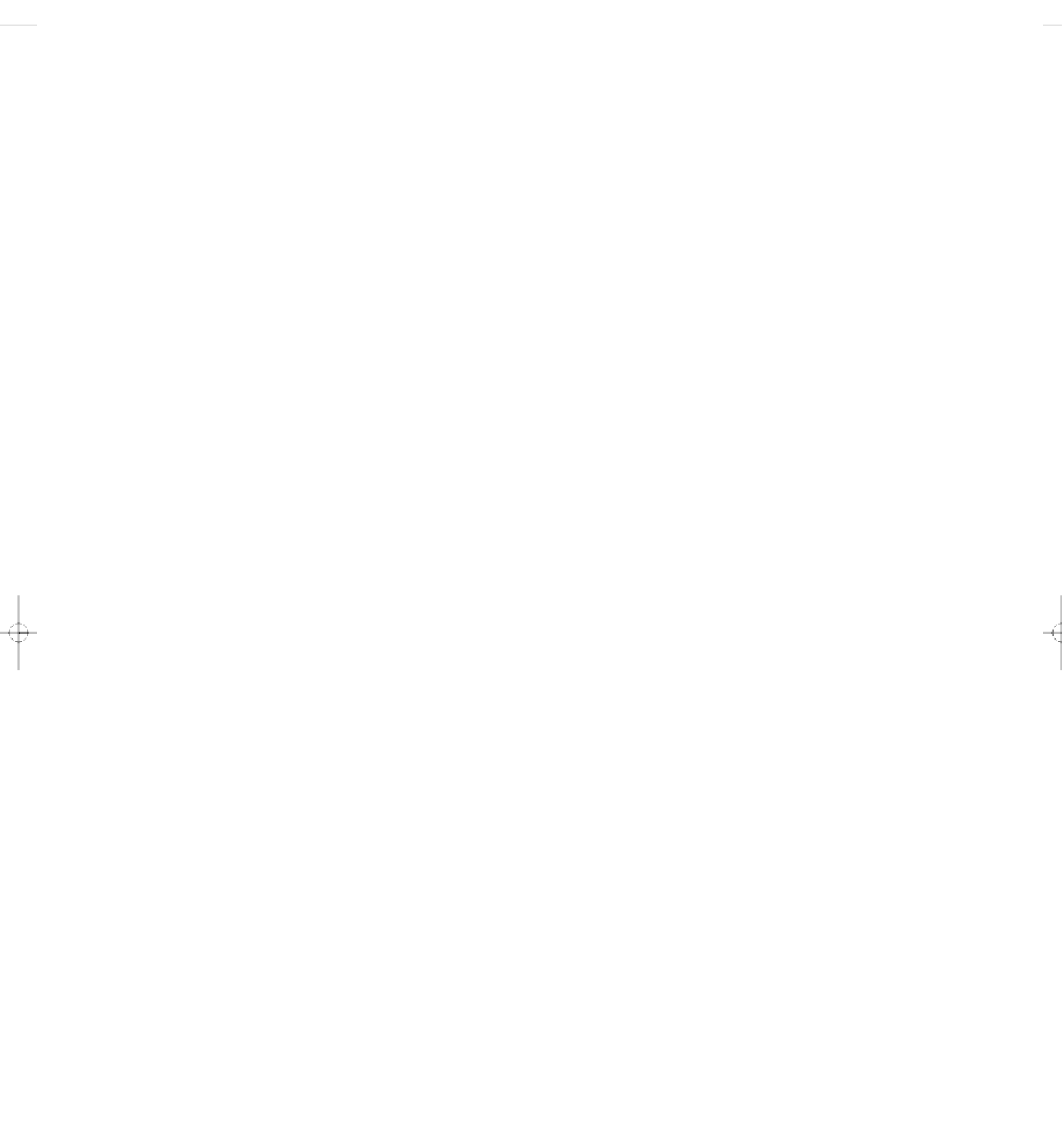Environmental Engineering Reference
In-Depth Information
Primary
Secondary
Chlorine
disinfection tank
Bar screen
Grit chamber
Settling tank
Aeration tank
Settling tank
To river, lake,
or ocean
Sludge
Raw sewage
from sewers
(kills bacteria)
Activated sludge
Air pump
Sludge digester
Disposed of in
landfill or ocean or
applied to cropland,
pasture, or rangeland
Figure 11-33
Solutions:
primary and secondary sewage
treatment.
Sludge dry
ing bed
marsh of sand, gravel, and bulrushes, which filters out
algae and remaining organic waste. Some of the plants
also absorb (sequester) toxic metals such as lead and
mercury and secrete natural antibiotic compounds
that kill pathogens.
Next, the water flows into aquarium tanks. Snails
and zooplankton consume microorganisms and are in
turn consumed by crayfish, tilapia, and other fish that
can be eaten or sold as bait. After 10 days, the clear wa-
ter flows into a second artificial marsh for final filter-
ing and cleansing.
The water can be made pure enough to drink by
using ultraviolet light or by passing the water through
an ozone generator, usually immersed out of sight in
an attractive pond or wetland habitat. Operating costs
are about the same as for a conventional sewage treat-
ment plant.
Some communities work with nature by using
nearby natural wetlands to treat sewage, and others
create artificial wetlands for such purposes (see the
following Case Study).
Science Case Study: Using Wetlands
to Treat Sewage
Some communities use natural or artificially created
wetlands to treat their sewage.
More than 150 cities and towns in the United States
use natural and artificial wetlands to treat sewage as a
low-tech, low-cost alternative to expensive waste
Figure 11-34
Solutions:
ecological wastewater purification by
a
living machine.
At the Providence, Rhode Island, Solar
Sewage Treatment Plant, biologist John Todd demonstrates how
ecological waste engineering in a greenhouse can purify waste-
water in an ecological process he invented. Todd and others
are conducting research to perfect solar-aquatic sewage treat-
ment systems based on working with nature.
























